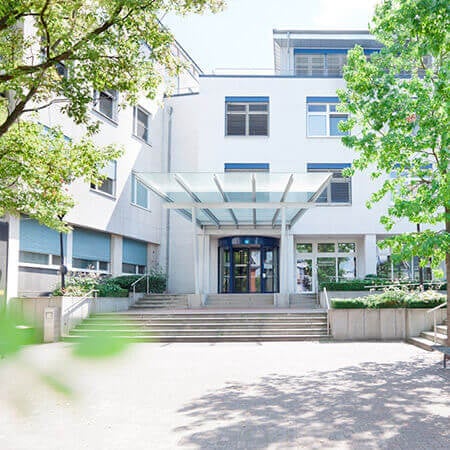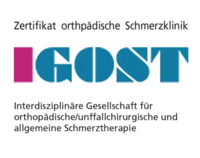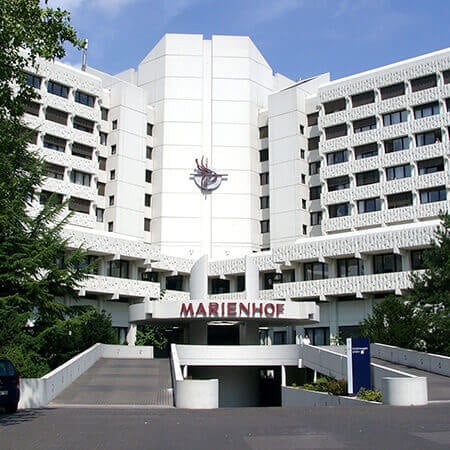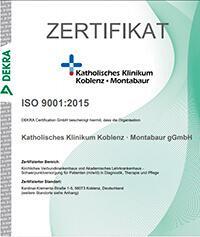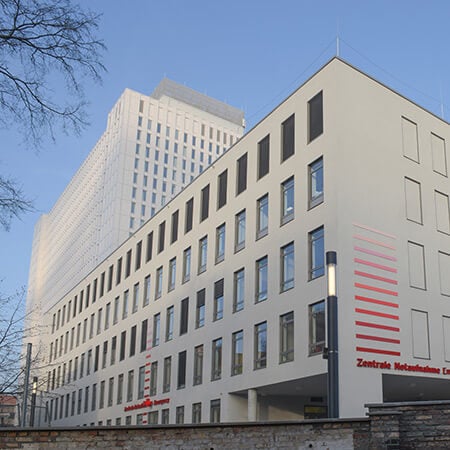Syringomyelia is a pathology of the nervous system, in which cavities (the syrinx) appear in the spinal cord.
This condition is incurable, so its development at a young age will follow the person throughout his life. At the same time, therapeutic management is indicated for people with this disease, and with progressive course, surgical measures are indicated.
Content
- Syringomyelia overview
- The course of syringomyelia in adults and children
- Symptoms
- Diagnostics
- Drug therapy
- Surgery
- Treatment in European hospitals
- Cost of treatment
Syringomyelia overview
Syringomyelia develops due to a spinal canal dilation. This occurs when the cerebrospinal fluid, bumping into some obstacles, bends around them, and gradually forms cavities under pressure. At the same time, auxiliary cells of nerve tissue grow in the spinal cord. These cells themselves do not transmit impulses. As a result of the above pathological changes, the information carried by the impulses to the organs and the brain is disrupted.
Syringomyelia can be congenital or acquired. A congenital disease is the result of improper development of the spinal cord in the fetus, which affects mainly its gray matter. The congenital brain conditions can also provoke the onset of syringomyelia.
The disease begins unnoticed, but its early development is accompanied with weight loss and impaired hand functions. During this period, syringomyelia sufferers often cut and burn themselves because they cannot pull the hand away in time.
The next stage of the disease progression that patients with syringomyelia notice is severe muscle weakness, a decrease in muscle tone and volume. It becomes difficult to move.
The skin on the hands is bluish, and it is often exposed to various skin conditions appearing. But the patient does not feel them, because sensitivity is impaired.
Syringomyelia is pathology of the central nervous system with formation of cysts in the spinal cord.
Treatment includes monitoring and symptomatic medicines, or spinal cord surgery.
Cost of surgical syringomyelia treatment is from €8,101. You can find other prices on the Booking Health website.
The best hospitals in Europe are:
- University Hospital Rechts der Isar Munich
- Helios Hospital Berlin-Buch
- University Hospital Frankfurt-am-Main
- University Hospital of Ludwig Maximilian University of Munich
- Clinic of Advanced Biological Medicine Frankfurt-am-Main
The course of syringomyelia in adults and children
Syringomyelia most often develops in the second or third decade of life. In about 50% of such patients, syringomyelia has non-progressive clinical manifestations.
Syringomyelia that begins at an early age is characterized by a more rapid, progressive course of the disease. In some cases, the course of syringomyelia in children may be reversed or stabilized without surgery, as confirmed by MRI-verified spontaneous partial or complete dissolve of the syringomyelitic cysts. A lower rate of progression is suggested for syringomyelia when it begins at an older age.
There are several variants of the course of syringomyelia in childhood and adolescence. One of the variants has a typical neurological picture in the form of curvature of the spine, weakness in the upper extremities, and numbness. However, as the skull and musculoskeletal system grow and the child's spinal column grows, the cerebellar amygdala rises, the flow dynamics improve, and as a result, the cavity starts to dissolve with corresponding regression of neurological symptoms.
Another variant of the course of syringomyelia with onset in childhood and adolescence does not cause any neurological dysfunction for a long time or it is minimal.
Syringomyelia in childhood can be accompanied by neurological disorders or by minimal myelopathy. In the subacute onset of the disease, the clinical picture develops over several days and may be manifested by myelopathy syndrome.
Symptoms
Symptoms can be caused by several pathological mechanisms: compression, cerebrospinal flow dynamic dysfunction, and instability in the craniovertebral transition associated with bone anomalies.
Most patients with syringomyelia report the first symptoms do not cause any serious discomfort. Occipital pain is the first complaint reported by patients, and it is one of the most common symptoms so far. An increase in the intensity of pain in the occipital region is observed when coughing, sneezing, tilting the head backward, and performing of Valsalva maneuver, indicating that its intensity is related to intracranial pressure. The pain can become chronic. Headache in patients with syringomyelia should be differentiated from its other types (tension, migraine, cluster, due to cervical spine osteochondrosis).
The next symptom of syringomyelia is gait abnormality associated with coordination disorders, rather than weakness in the lower extremities. There are reports of such rare variants as the "tiptoe" gait typical for young patients.
Another common symptom of syringomyelia is impaired sensitivity: impaired superficial (temperature and pain) sensitivity while preserving deep sensitivity. The patients describe the changes as a tingling sensation, a burning or squeezing sensation, and a lack of temperature sensitivity.
Impaired swallowing is another symptom that is detected in some patients with syringomyelia in the early stages of the disease. This is probably associated with brainstem compression in the area of the greater occipital nerves.
Limb weakness (paresis) is significantly more common in patients with comorbidities. First, the distal muscles of the upper limb on one side are affected, and then atrophy develops. The contralateral upper extremity is involved later. The development of paresis in the lower extremities occurs in far advanced stages of the disease. The cases of neuropathic joint involvement (Charcot joints) in the patients with syringomyelia of the cervical and thoracic spine have been described.
Rare symptoms include sphincter dysfunction, trigeminal hypoesthesia (sensory disturbances in the trigeminal nerve), vocal cord paralysis, nystagmus (eyes making involuntary repetitive movements), and Horner syndrome (disruption in the neurological pathway from the brain to the face). Also, symptoms of hydrocephalus (accumulation of cerebrospinal fluid within the brain) and sleep apnea (a sleep disorder that implies breathing stopping and starting again during sleep) are possible in adult patients with syringomyelia. There are reports in the literature about the sudden death of patients with untreated or undiagnosed syringomyelia due to cardiac or respiratory arrest.
All the described symptoms gradually progress over time. Scientists studied cases of the disease and concluded that symptoms of syringomyelia can progress approximately in several years. According to the studies, 65% of patients developed symptoms slowly, 29% developed them at a moderate rate, and 6% developed them rapidly. The gradual development of symptoms was noted in 82,5% of patients, stabilization – in 16,2%, and spontaneous recovery from syringomyelia – in 2,3%.
Diagnostics
Contrast-enhanced MRI of the brain and all regions of the spinal cord is required to diagnose syringomyelia. When performing MRI of the brain, craniovertebral transition region and all parts of the spinal cord are examined. The patients are assessed for the extent of the brainstem compression, brain ventricle size, the extent of descending cerebellar tonsils, syringobulbia (also a disorder that implies a cyst formation, but occurs within the spinal cord and affects the brain stem in the process), syringomyelia extent, and the presence of tumors.
Drug therapy
The choice of therapeutic tactics depends primarily on manifestation in the individual case of each patient. A team of following specialists is usually involved in the treatment: a neurologist, a neurosurgeon, an orthopedic surgeon, an ophthalmologist, and experts in other medical fields. It is this comprehensive approach that allows the doctors of the European hospitals to comprehensively plan the treatment of each patient.
The overall treatment of syringomyelia has three main goals. These are reduced inflammation, reduced cerebrospinal fluid production, and pain relief.
Syringomyelia formation can cause an inflammatory response, which may be mediated by cytokines. Therefore, there is a rationale for treating patients with syringomyelia with short courses of nonsteroidal anti-inflammatory drugs (NSAIDs) or corticosteroids.
The use of proton pump inhibitors, diuretics and corticosteroids reduce cerebrospinal fluid production as well as decrease intracranial pressure, which may help control pain associated with syringomyelia. The prolonged treatment with these drugs can cause metabolic disorders, and therefore should not be considered the first-line treatment.
To relieve pain associated with the pathology, in addition to NSAIDs and corticosteroids, some anticonvulsant therapies can be administered. They have advantages in treating neuropathic pain. The effect is usually achieved by reducing the release of such neurotransmitters as glutamate and substance P. Such drugs should be administered two-three times daily, which usually results in a significant reduction of clinical manifestations.
Surgery
The preferred therapeutic measures and techniques can vary during treatment. This depends on many aspects, including the degree of negative devolvement of the disorder, the presence of certain symptomatic features, the root cause of the pathology, the symptomatic significance in terms of the quality of life of patients, their age, current health status, etc. All of these conditions also influence price for syringomyelia treatment in European hospitals. Therefore, all decisions regarding treatment regimens are discussed by clinicians in a collegial manner, taking into account the peculiarities of each case. The physicians carefully assess the theoretical benefits and potential risks of each treatment option, the possible aftereffects and consequences.
A preferred approach is first to consider minimally invasive surgery without wide dissection, with access to the pathology area through small incisions. This approach allows minimizing the trauma of the intervention and makes the recovery period as short as possible. The latest neuronavigation systems are used during the surgery. Thus, surgeons can monitor the course of the surgery for syringomyelia in real time, and receive images of the operated area from different angles. This minimizes the risks of inaccuracy in the course of the surgical intervention.
Minimally invasive techniques of decompression surgery enable the restoration of the normal flow. Decompression surgery provides effective pain management and elimination of neurological dysfunction in about 80% of cases, and in about 45% of cases it provides satisfactory quality of life within two years after surgery. The improvement of patients is obviously due to the restoration of cerebrospinal flow.
Treatment in European hospitals
There are many answers to why treatment in European hospitals is so popular.
Well, first, European medicine is based on scientifically proven methods of diagnosis and treatment. Here considerable funds are spent on medical research. The results of this research are immediately applied in clinical practice. For this reason, the latest achievements of medicine are used for treatment in European hospitals.
It is because of the development and support of scientific research that European doctors manage to cure diseases previously considered incurable or associated with high mortality rates. Of course, not all scientific developments are included later in clinical practice, but only those whose effectiveness and safety have been tested in various medical centers in Europe during step-by-step clinical investigations.
And second, European medicine is increasingly stepping away from a targeted approach, meaning that different health conditions are perceived as disruptors of the functional integrity of the organs and tissues in the body, and their treatment should consist of interdisciplinary collaboration among physicians. So, if a patient has syringomyelia, most likely other specialists, besides a neurologist or neurosurgeon, will be involved in the treatment.
The best specialized medical centers for the treatment of syringomyelia are:
- Catholic Clinic Koblenz-Montabaur, Germany.
- University Hospital Oldenburg, Germany.
- University Hospital Frankfurt am Main, Germany.
- University Hospital of Ludwig Maximilian University of Munich, Germany.
- Bundeswehr Academic Hospital Berlin, Germany.
You can find more options and information on the treatment in European hospitals on the Booking Health website.
Cost of treatment
The cost of treatment of syringomyelia is based on many specific conditions. The most common of them include the severity of the pathology, the severity of symptoms, their impact on the patient's quality of life, the need for surgical intervention, length of hospitalization, etc. Therefore, the approximate cost of treatment can be found out after undergoing the comprehensive diagnostics. Although for many people the price may seem relatively high, the average cost of treatment of syringomyelia in European hospitals justifies itself in the quality aspect.
- The price of diagnostics for syringomyelia starts at 469 EUR.
- The price of surgical treatment for syringomyelia starts at 8,101 EUR.
- The price of rehabilitation starts at 540 EUR.
Feel free to leave your request on the Booking Health website so that we could select a hospital for you, draw up the preliminary estimate and provide you with all necessary information.
Authors:
The article was edited by medical experts, board certified doctors Dr. Nadezhda Ivanisova and Dr. Vadim Zhiliuk. For the treatment of the conditions referred to in the article, you must consult a doctor; the information in the article is not intended for self-medication!
Sources:
National Library of Medicine
